Meta-photography, surveillance and control.
Posted: October 31, 2013 Filed under: Photobooks, Photography 5 CommentsWe have discovered recently that our whole society is under surveillance and control.
It has recently been revealed that our society is under the NSA surveillance. Yes the previous sentence is cancelled because I don’t imagine that anybody would have been credulous enought to not knowing that ! Just to remind you, in 1988, the existence of the Echelon spy network was already revealed.
Well, these revelations are, for me, the opportunity to talk about six pieces of work connected to this topic.
The first one « I wish you were here », was realised during an artist residency. A book was published in 2011, as an artist book of 40 copies, printed on risography, by Eduardo Serafim. For the series, Eduardo got access, via internet, to some surveillance cameras which were monitoring public or private spaces. From the pictures captured, he made postcards which were sent to public people, indicating the IP address of the camera and the words : I wish you were here. This work emphasizes the relationship between citizens and privacy. Eduardo first reveals how much everything we do is monitored (even with the agreement of people who accept the monitoring because of the safety) and how easy it is to get access to this monitored world, then becoming an intruder or voyeur in someone else’s life. It also questions the fact that, even if we know that we are under surveillance, do we really understand what it means ? And knowing that, will this change our way of acting in a monitored area ? In a second level, he plays with the interaction between private and public by sending the printed postcards to public people. We mainly send postcards to people we know in our privacy circle, so the questions become : how much do we know someone, and what means knowing someone ? Well, in which society do we live ?
http://www.eduardoserafim.com/iwishyouwerehere.html
The second one is Andrew Hammerand « The New Town », another artist book published in a limited edition of 25. The photos are all taken from one single point of vue from a controllable security camera, in a midwestern town, showing people outside, shopping, siting on a lawn or the town at night. What we discover is a slice of time in the life of a town and we can only imagine what are the activities that are monitored: behind trees, we discover some people who may either be burglars or friends talking outside. The use of a security camera draws our mind to suspect and question what we see. Again, for the purpose of security, people accept to be under surveillance, and here again, it questions this acceptance. The book becomes a kind of security report notebook for safety purposes, even using a spiral bound.
http://www.andrewhammerand.com/the_new_town/index.html
The next book that I will talk about is Joachim Schmid recent « X marks the spot ». Joachim Schmid is an activist in book publishing, using a lot the « print on demand » process. Here he shows a collection of pictures made with the camera located in Dallas – Texas, on Dealey Plaza. The originality of this camera is that its purpose is not the security. This location is the exact point of vue that had the sniper when he killed J. F. Kennedy on November 22, 1963. Everyday, many people try to avoid cars to reach the X marked on the ground, indicating the position of the car of the President, to be photographed on the site. This book fits completely with the manifesto which was proclaimed in 2012 in Arles, called « From here on », as a statement for the basis of a new photography, whom Joachim Schmid was one of the signatories. This work tells less about control and surveillance than about the appropriation of an historical event with the new materials and technologies, but also about globalization which means that we are able to transport ourselves on the other side of the planet to be spectator, or voyeur, of an instant. It is dizzying when you see someone on the other side of the camera who is moving : could, this person, at this precise moment, have in mind that you are watching him from your desktop ? (at least this is what I feel when I use those kind of livecams).
http://schmid.wordpress.com/works/x-marks-the-spot-2013/
http://schmidbooks.wordpress.com/
http://www.earthcam.com/usa/texas/dallas/dealeyplaza/
About surveillance, a nice book has been published this year. It is « Top Secret, Images from the Archives of the Stasi » by Simon Menner. In 1992, the archives of the Ministerium für Staatssicherheit commonly known as the Stasi, were officially opened to the public. Thematically, the book presents some of those treasures, chapter by chapter. We find photos of people or locations (mailboxes…) who have been under surveillance, but the best part is the collection of photos for the instruction of agents, like disguises collection or the use of secret codes to communicate and remaining under cover. With all due respect to the period and what it meant, some photos are hilarious.
http://www.simonmenner.com/pages/Stasi-Index.htm
http://www.hatjecantz.de/simon-menner-top-secret-5654-1.html
http://www.hatjecantz.de/fotoblog/?p=2155
The two last photographers whose I will talk, share the same topic, which is more about control than surveillance (and they also share nationality, they are both from England).
The first one is David Moore and his book « The last things » was published in 2008. From September 2006 to April 2007, David Moore, with the support of Arts Council of England, was granted access to the underground military facility which is maintained to be used in case of emergency. It is a fully equiped facility from where the government could continue to lead the country. In the photographs, we only see some furnitures, objects, rooms and cupboards. It looks like an unused area, what it is in fact, but, what is frightening, is that everything is prepared to be used and everything is considered at the same level, whatever it is a bibelot or a broadcasting video camera, prepared for some emergency statement. We can almost feel claustrophobic because of the absence of natural light. It has a lot of similarities with a prison, with corridors and doors/gates. What makes this facility so oppressive is also the fact that we know the purpose of it. Every important data has been erased on request, so things here are very serious. If that would be a kind of playground for kids, we would completely change our mind when reading the photos, but knowing the purpose, we can’t avoid thinking to a post disaster world as seen in some anticipation books or movies, imagining the deserted chaos outside, and knowing that we would stay outside as all other common people.
http://davidmoore.uk.com/projects/the-last-things
The last book I will talk about was published early this year and is one of my favorite book of the year. « Control order house », by Edmund Clark was published by Here Press. Edmund Clark was already known for his work in Guantanamo « If the light goes out » which was a reflection about the different ways of living in Guantanamo and the consideration of what is « home » for detainees and militaries. The subject of Edmund Clark’s new work is a house in which people, under suspicion of terrorism, are detained. For the book, Edmund Clark was allowed to stay, as a guest, in the house, together with the controlled man, detained here. This were three days in December 2011. In the book, Edmund mixes photographs and documents about, as he is named, CE’s case, as a diary, letters, and trial pieces. What he shows in his photographs is a documentation of the house. Each photo is automatically named by the camera, from _MG_2555.jpg to _MG_3065.jpg which supposes that none of the pictures have been erased. It becomes a complete recording of each square foot. The missing of a recognisable name prevents us to appropriate the photos. With the simple name of « sofa » we could throw ourselves, by imagination, and sit on the sofa but it remains impossible because it is not a sofa, it is just a number. This reminds us the famous series « The Prisonner » who claimed « I am not a number, I am a free man ». The denial of a name, by metaphor becomes the negation of freedom. Here the control and surveillance is felt by the quantity of photos which means that no corner, neither object has been omitted. No part of the house can remain secret or hidden (here again is a strong analogy with the series in which the prisonner always knew he was observed). The only warm presence, in the series, is a cat and everything is unpersonal because the identity of the man living here must remain unknown and the same for the location of the house. Aesthetics of the pictures is absolutely raw and they look like blind shots without framing, or made with a hidden camera. This raw quality emphasizes the impression of a restricted area where photos are not allowed which is, again, a denial of freedom (since the Vietnam war, the governements know that what has to remain unknown must not be photographed). The photos could come from the archive of a secret police or could have been shot by a programed computer directed by a remote control. It becomes very disturbing when we experience the feeling and the anxiety of a custody.
http://www.herepress.org/publications/edmund-clark-control-order-house/
All images copyright Eduardo Serafim, Andrew Hammerand, Joachim Schmid, Simon Menner, David Moore, Edmund Clark and the publishers. Can be removed on request.



















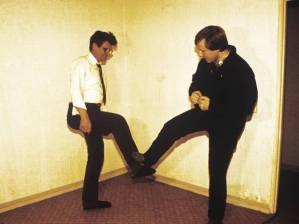


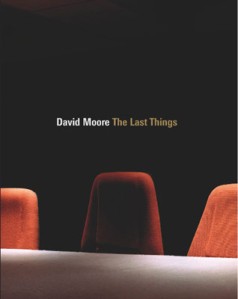





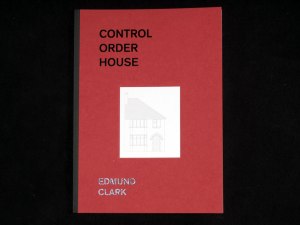

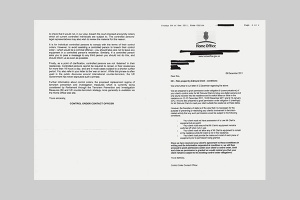
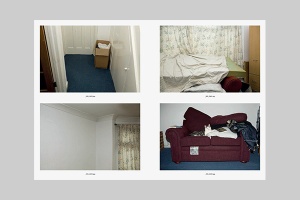
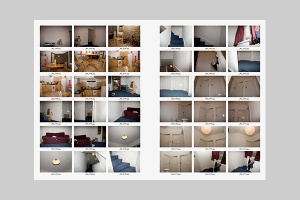
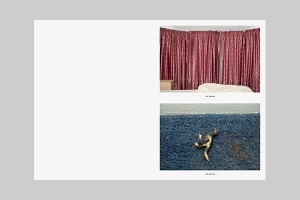
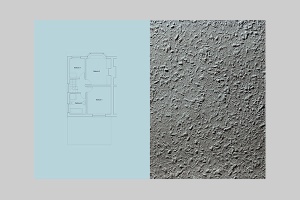
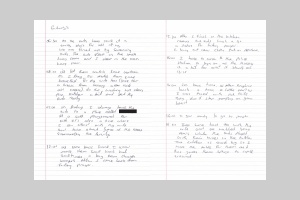
Hi!
Interesting choice! I think that we (photographers and other artists) are very much behind of what is happening, behind the way of how monitoring works. I believe that the core of surveillance is not visual anymore…. or at least will not be in the future. Security cameras are where they are; but who will need them in the digitalised world where your decisions will be calculated in advance.
We must start thinking about this; rapidly! Freedom of digital media is freedom of monitoring, if we won’t take over. But how?
I recently read the book by Fred Ritchin: After photography,…. a great deal of thoughts where digitalisation is heading…. towards what kind of future we are heading!
i just want to share with you those thoughts. I am beeing very pessimistic 🙂
Thanks for your comment Aljaz, and I agree, we don’t really know towards what kind of future we are heading!
Very interesting post as always. It’s always good to see how artists respond to these issues even though they have been around for a very long time – the only difference being that technology appears to make it more pervasive in the developed world.
Thanks for your comment. The new technologies bring together more freedom in the access to information and more surveillance. Like Paul Virillo has theorized with his notion of the new accidents accompanying the new developments!
[…] The excesses of our societies shown in a photobook. At first glance, this could be a repellent book. Many small pictures unsorted which also appeared to be imperfectly framed. Nothing happening except boredom. Well, this might well be what we can feel under house arrest. The deprivation of liberty, in the name of security. Probably more a political book than a photobook. Read more here. […]